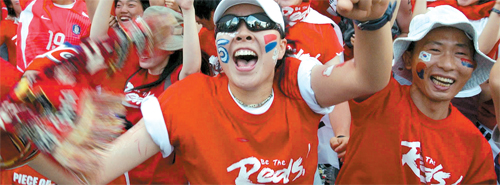Iconic designs that define the nation

①.
A few years from now, today’s iPod generation will hark back to the “good old days” of Apple’s sleek, minimalistic media player, just as the Sony Walkman generation is swept away with nostalgia for clunky cassette players.

⑧,④,⑤,③
The aim of the foundation, which was launched under the Ministry of Culture, Sports and Tourism last May, is to enhance Korea’s design capabilities and promote domestic designs and designers to the world.
Part of the task is looking into and cataloging Korea’s design assets and investigating the nature of Korean design and how it defines the country.
“Korean designers draw on two sensibilities, one which relates to keeping up with Western values and the other which is to remain true to their roots,” said Kim Jin-kyeong, one of the curators who helped select designs for the publication.
Other participants in the process include curators Kim Yeong-cheol, Park Hae-cheon and Choi Gyeong-won, plus design professors Kang Hyeon-ju (Inha University), Kim Myeong-hwan (Kaywon School of Art and Design) and Oh Chang-seob (Konkuk University).
So what designs have defined Korea and its people in the last half a century
Looking at the list, most Koreans go “ah” in recognition, and non-Koreans, too, might conjure up some associations, especially with designs such as the “Be the Reds” T-shirts ①that swept the country during the 2002 FIFA World Cup, which was hosted by Korea and Japan.
Some 20 million of the T-shirts were sold during the tournament, according to the book. Park Yong-cheol, who designed the item, said he designed the letter R in the shape of the number 12 to imply Koreans are the 12th player in the team.
Another design is Hodori ②, the mascot for the 1988 Seoul Olympic Games that was created in 1983 by Kim Hyeon. Hodori is a friendly-looking tiger wearing a sangmo, a streamer attached to a hat used in Korean folk dance.
The streamer creates the letter S, as in Seoul. The foundation says the mascot embodies the spirit of the country, especially since the design was selected after a nation-wide vote.
Some spicy food-loving non-Koreans may also recognize Shin Ramyun ③, Korea’s signature brand of instant noodle that became, if you excuse the pun, an instant hit with Koreans and consumers overseas after it was created in 1986. Curator Choi Gyeong-won says the red-and-black packaging embodies the spicy flavor of the dish.
The design has combined a “visual taste that is embedded like DNA in our bodies.”
Other designs are rather humble and they have rarely been granted special value.
A case in point: the metal cheolgabang container④ used for delivering Chinese food. According to the foundation, Chinese restaurants used wooden delivery casings and then plastic ones in the past, but the metal ones became more popular because the design keeps the dishes in position even on the most blustery of motorcycle delivery trips.
Not only that, metal is easy to clean, important when dealing with greasy food, and the shiny finish gives off a fresh image.

②,⑥,⑨
It was created by Gil Pil-gon who ran a textile factory in Pusan. When he was bathing, he accidentally came across a piece of fabric imported from Italy. When he rubbed it on his body, it exfoliated his skin, and voila, an historic invention was born.
The MonAmi 153 ballpoint pen, recognizable to virtually every Korean, also makes the list. The foundation says the simple design is perfect both in terms of its visuals and function. In that sense, this pen is a symbol for the average Korean, regardless of social status.
Some representative structures and areas in Seoul such as the Gyeongbu Expressway⑥ made the list, too. According to the foundation’s report, the late President Park Chung Hee was so impressed by the autobahn, the expressways in Germany, on a visit to Europe that he decided to push forward the construction of the Gyeongbu Expressway despite opposition.
Under Park’s close supervision, the construction of the 428-kilometer (265.9-mile) road that linked Seoul and Busan was completed in two and a half years. But critics label it a “landmark symbol of dictatorial development.”
Other signature city designs include Cheonggye Stream ⑦, which underwent major reconstruction in 2005, the statue of Admiral Yi Sun-sin⑧ overlooking central Seoul and the Tower Palace⑨, an apartment complex in southern Seoul deemed the ultimate symbol of wealth here.

⑦
Items unique to Korea include the Cuckoo rice cooker, kimchi refrigerators and stone beds. Korea Design Heritage 2008 is a reference book only and it’s not for sale to the general public. But Tae Jeong-eun of the foundation says officials plan to draw up a similar list every year in a bid to make better use of Korea’s design resources.
By Kim Hyung-eun Staff Reporter [hkim@joongang.co.kr]










with the Korea JoongAng Daily
To write comments, please log in to one of the accounts.
Standards Board Policy (0/250자)